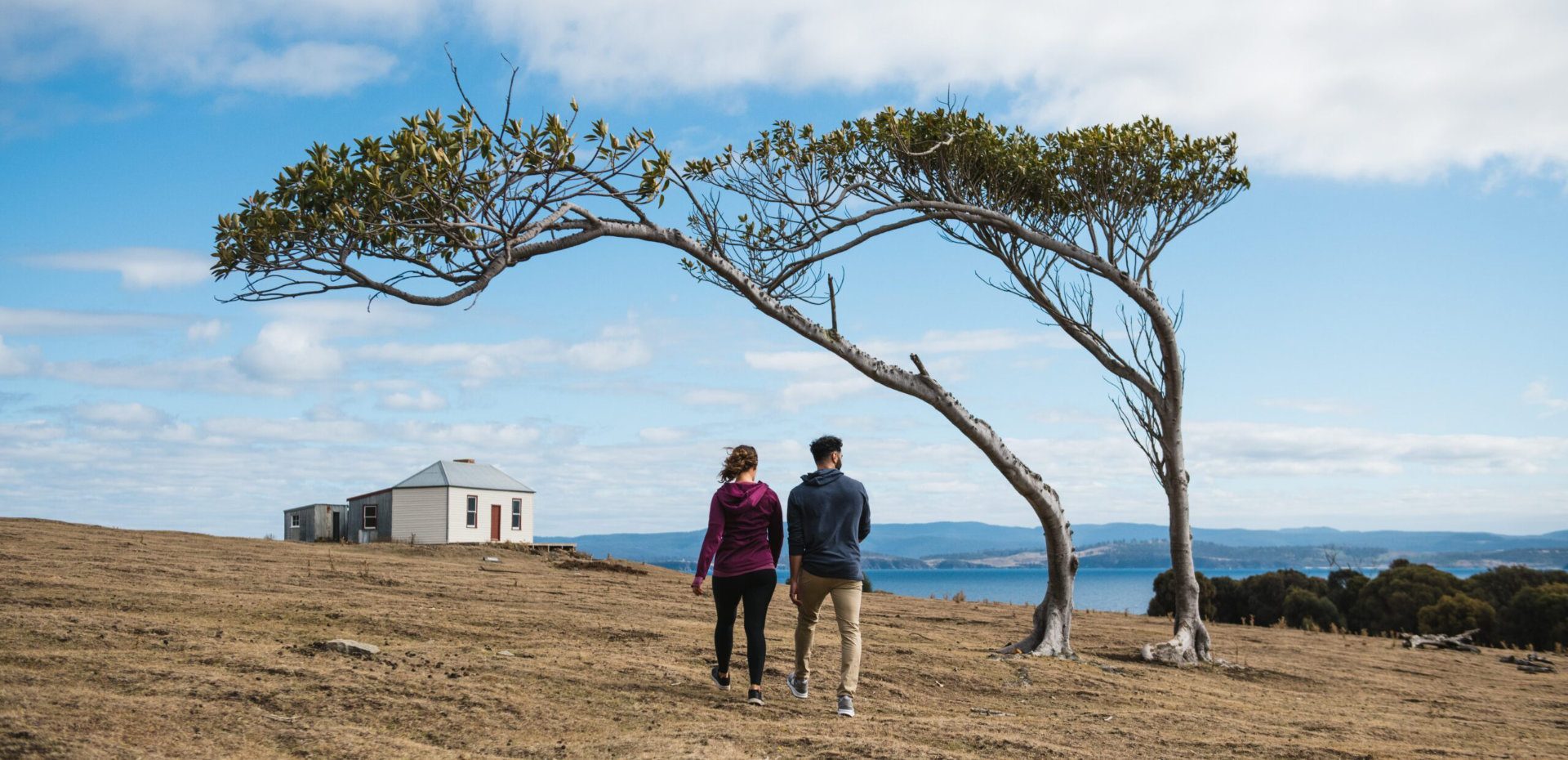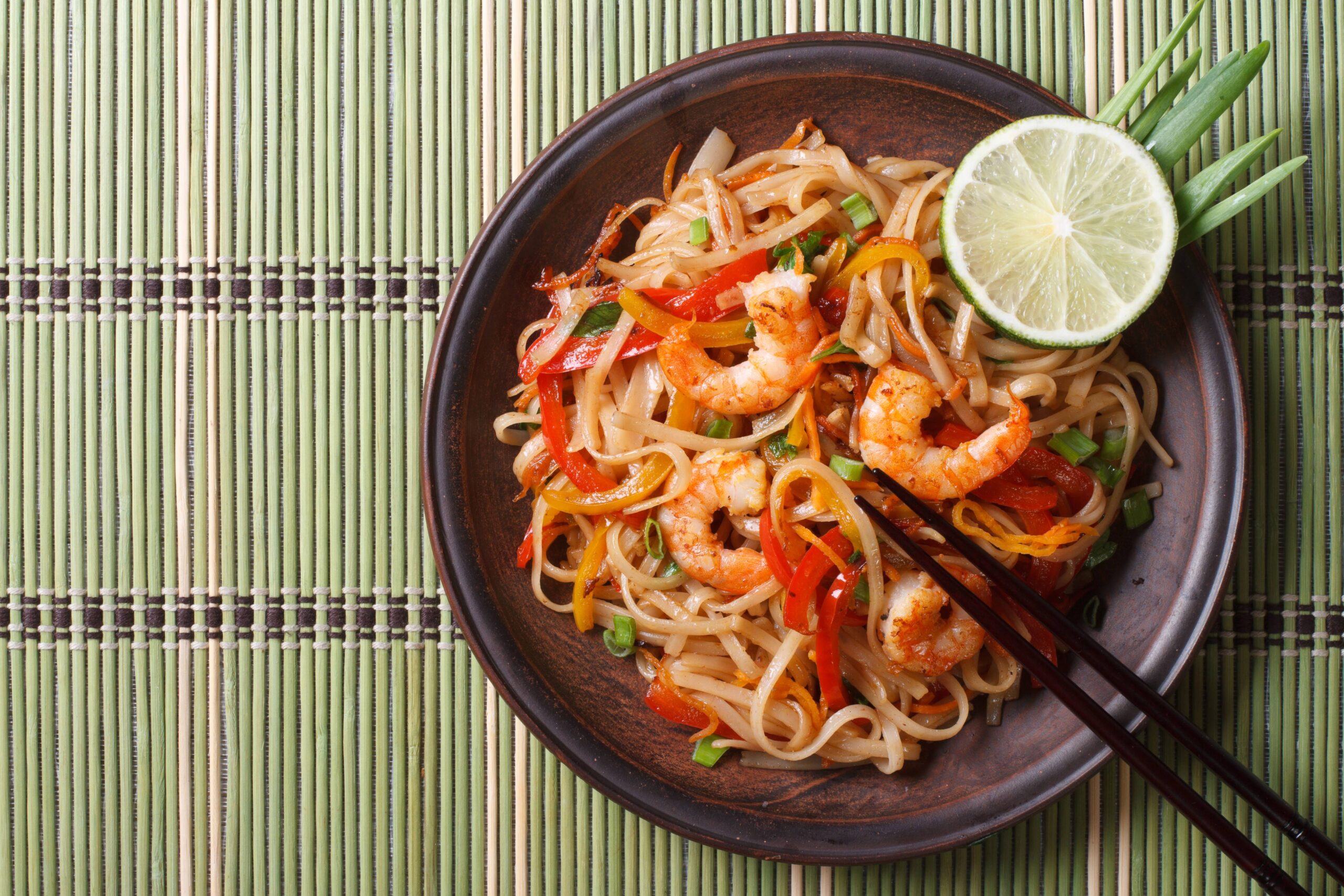Welcoming, windswept and wildly beautiful, Tasmania invites you to reconnect with nature amid its backdrop of rugged mountains, pristine coast and verdant national parks.
From the crisp air to the spectacular scenery and the sense of abundant space, there’s no mistaking the feeling once you’ve touched down in Tasmania.
The distance that separates Tasmania from the rest of Australia is exactly what brings you closer to nature – hike to secluded lookouts, observe wildlife in perfect silence and admire an awe-inspiring range of scenery, from alpine plateaus to coastal tracks.
Here are five of the best ways to immerse yourself in Tasmania’s natural beauty.
1. Get Walking
Tasmania’s landscape is strikingly diverse – and the best way to see it all is on foot. Whether you prefer to stroll along beaches, scale towering mountains or make your way through vibrant bushland, Tasmania has a trail to suit every traveller.
Maria Island, a little dot on the east coast, is just like a miniature Tasmania. Even more secluded than Tassie itself, it’s home to incredible walking tracks past convict heritage sites and local wildlife. Crowds are unusual here, meaning you can walk for hours relatively undisturbed. Make sure to extend the same courtesy to its inhabitants – wombats and wallabies are common and prefer to be observed from a generous distance, preferably more than two metres. Take the Maria Island Wildlife Pledge and promise to keep the island wild and pristine.
The 48-kilometre Three Capes Track is a cliff-hugging wilderness experience of remote, raw beauty. Beginning and ending at World Heritage-listed Port Arthur on the Tasman Peninsula, just 90 minutes from Hobart, a challenging walking track leads you past dramatic mountain peaks, dense eucalypt forest and colourful coastline. Dedicated overnight stops offer the essentials, including gas cooktops and comfy mattresses, allowing you to simply soak in the scenery over the course of this four-day hike.
Delve deep into the Tasmanian forest at Southwest National Park, two hours south of Hobart and the island’s largest wilderness expanse. Walk in the shadow of majestic Huon pine, breathing in the scent of sassafras, celery top and myrtle. Whether you take on the mighty South Coast Track or are satisfied with a shorter stroll, the park offers a chance for true connection to Tassie’s timeless beauty. Access the park via Cockle Creek, or fly directly to Melaleuca from Hobart with Par Avion.
Magical and mercurial in equal measure, the ever-changing scenery of Walls of Jerusalem National Park sums up the effervescent spirit of Tasmania. The weather here can shift from one hour to the next, offering a wildly inspiring walk dotted with highland lakes, craggy mountains and pure pine forest. This is an exhilarating wake-up call from nature for city-weary souls. The walk starts at Lake Rowallan via Mole Creek.
2. Get Biking
Keen cyclists can make Tasmania their playground with a network of impressive bike trails.
Once a thriving mining town, Derby is now one of the prime spots for mountain biking. Just over an hour's drive northeast of Launceston, you'll find 125 kilometres of purpose-built trails to suit all skill levels with a backdrop of pure wilderness. Beginners can start with the Riverside warm-up track, which connects to the centre of town, moving on to the gentle slopes of the Relics tracks. If you know your stuff, try the rocky terrain of the aptly named Rattler or the Snig Track, topping out at 560 metres above sea level.
Another great option is Maydena Bike Park, a gravity-focused experience in the Derwent Valley approximately 90 minutes' drive from Hobart. Designed and built by renowned trail company Dirt Art, it caters to everyone from families to elite riders. Choose your own adventure among 73 trails, all maximising the park’s unique rainforest environment. Admire lush greenery on the Beginner Trail, adventure in nature on the Wilderness Trail or experience the ultimate downhill track, Go With The Flow.
3. Get Fishing
One of the last great wild trout fisheries in the world, Tasmania attracts keen anglers from far and wide to its shallow, clear waters. The sheer diversity of fly-fishing spots is astounding, encompassing everything from highland streams to wide rivers, sea-run trout and wilderness lakes. Among the best are Nineteen Lagoons, approximately 40 minutes south of Launceston, Little Pine Lagoon, 90 minutes south of Launceston, the Meander River near Deloraine and St Patricks River less than half an hour from Launceston.
Expect to encounter one of the purest strains of brown trout in the world, a wild and cunning species descended directly from roe transported to Tasmania by homesick Brits more than 150 years ago. Solitude is easy to find amid the vast number of expansive estuaries, rivers, creeks and lakes – but if you would like some company, friendly local guides are available.
4. Get Golfing
Practising your handicap amid stunning coastal scenery, grazing sheep and sweeping sand dunes is par for the course in Tasmania. The island state is home to four of the top 13 courses in Australian Golf Digest’s 2020 Australian Top 100, famed for being as beautiful as they are challenging. With more than 65 courses in total, Tasmania ensures you’re never far away from a green.
Cape Wickham Links on the northern tip of King Island offers panoramic sea views from every hole, with the 11th almost in the water and the 18th above Victoria Cove. Keep one eye on the ball and another on the ocean, where whales and seals do their best to distract the golfers.
Breathe salty sea air to a soundtrack of crashing waves as you navigate the undulating terrain at Ocean Dunes, King Island, described as a ‘wild rollercoaster ride’ by Australian Golf Digest.
Barnbougle in Bridport in northeast Tasmania is home to both The Dunes and Lost Farm, the former being a world-famous 18-hole traditional golf links course that cleverly complements the surrounding landscape. Lost Farm meanwhile is newer, built in steeper dunes across the Great Forester River, offering an exciting challenge with strategic bunkering.
5. Get Wet
In order to truly experience Tasmania’s nature, you’ll have to get off dry land and into its cool, pure waters. The dark, tannin-rich waters of the Lune River, two hours south of Hobart, wind slowly between lush overhanging trees, offering kayakers a calm cruise with plenty of time to spot birdlife. Local outfitters Esperance Adventures offer morning and sunset tours from Adamsons Peak and the Southern Ranges to the pristine beaches at Southport and Hastings Bay.
If you need to warm up after your kayak tour, make a stop at nearby Hastings Cave and Thermal Springs, where visitors are led through ancient flowstone, stalactites and stalagmites towards the 28-degree swimming pool. The natural thermal water here is full of rich minerals and provides a soothing atmosphere for a gentle swim. Book ahead and wrap up warm, as the outdoor temperatures can be cool in the Huon Valley.
From the pink-hued Hazards mountains to the calm blue waters of Wineglass Bay, it’s hard to find a more picturesque kayaking spot than the Freycinet Peninsula. A two-hour drive from Launceston and 2.5 hours from Hobart, this tranquil oasis offers sandy stretches of pure-white beach and fresh seafood after time spent on the water. For those who want to explore the peninsula by boat, there are a host of options from eco-tours to chartered fishing trips and sailing-hiking tours.

















